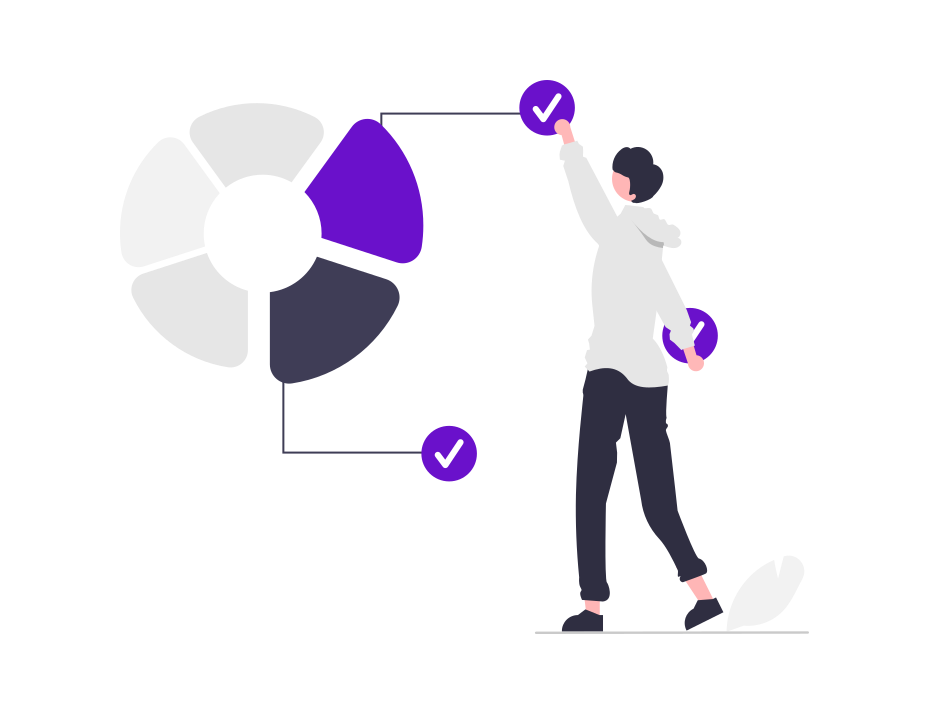Customer segmentation is a crucial aspect of any successful B2B marketing strategy. By dividing your target market into distinct groups based on specific criteria, you can tailor your marketing efforts to meet the unique needs of each segment. This approach enhances the efficiency of your campaigns, improves customer satisfaction, and ultimately drives revenue growth. In this guide, we'll explore the key elements of B2B customer segmentation and provide actionable insights to help you implement an effective segmentation strategy.
1. Understanding B2B Customer Segmentation
Customer segmentation in a B2B context involves categorizing businesses based on shared characteristics. Unlike B2C segmentation, which often focuses on individual consumer behavior and demographics, B2B segmentation considers factors like industry, company size, and purchasing behavior.
2. Importance of B2B Customer Segmentation
Effective segmentation enables companies to:
- Tailor Marketing Messages: Customize your messaging to address the specific needs and pain points of each segment.
- Optimize Resource Allocation: Direct resources to the most profitable segments, ensuring maximum return on investment (ROI).
- Enhance Product Development: Develop products and services that meet the unique demands of different customer groups.
- Improve Customer Retention: Build stronger relationships with customers by understanding and addressing their unique challenges and requirements.
3. Key Segmentation Criteria
To segment your B2B customers effectively, consider the following criteria:
a. Firmographics
Firmographic segmentation involves categorizing companies based on attributes such as:
- Industry: Identifying the sector in which the business operates (e.g., healthcare, finance, technology).
- Company Size: Classifying businesses by the number of employees or annual revenue.
- Location: Considering geographical factors that might influence purchasing decisions.
b. Behavioral Segmentation
Behavioral segmentation looks at how companies interact with your business. Key factors include:
- Purchase Behavior: Analyzing past purchasing patterns to predict future behavior.
- Engagement Level: Assessing the frequency and type of interactions with your brand.
- Loyalty: Identifying long-term customers versus those with sporadic engagement.
c. Needs-Based Segmentation
This approach focuses on the specific needs and pain points of your customers. It involves:
- Pain Points: Understanding the challenges each segment faces and how your product or service can solve them.
- Business Objectives: Aligning your offerings with the strategic goals of each segment.
d. Technographic Segmentation
Technographic segmentation categorizes businesses based on their technology stack and digital maturity. Consider:
- Technology Adoption: Identifying companies that use specific technologies or platforms.
- Digital Maturity: Assessing the level of technological sophistication within a business.
4. Steps to Implement B2B Customer Segmentation
Implementing an effective segmentation strategy involves several key steps:
a. Data Collection and Analysis
Start by gathering relevant data on your customers. This can include:
- CRM Data: Leverage data from your customer relationship management system.
- Surveys and Interviews: Conduct surveys and interviews to gain deeper insights into customer needs and behaviors.
- Third-Party Data: Utilize external data sources to supplement your internal data.
b. Identify Segmentation Criteria
Based on your analysis, identify the criteria that are most relevant to your business. This will likely involve a combination of firmographic, behavioral, needs-based, and technographic factors.
c. Segment Your Customer Base
Using the identified criteria, divide your customer base into distinct segments. Ensure that each segment is:
- Distinct: Each group should have unique characteristics that set them apart from other segments.
- Actionable: You should be able to develop specific marketing strategies for each segment.
d. Develop Targeted Marketing Strategies
For each segment, create tailored marketing campaigns that address their specific needs and preferences. This could involve:
- Personalized Messaging: Crafting messages that resonate with the unique challenges and goals of each segment.
- Channel Selection: Choosing the most effective channels to reach each segment, whether it's email, social media, or direct sales.
e. Monitor and Adjust
Continuously monitor the performance of your segmentation strategy and make adjustments as needed. Use metrics such as:
- Conversion Rates: Track how effectively each segment responds to your marketing efforts.
- Customer Satisfaction: Measure satisfaction levels within each segment to ensure your strategies are meeting their needs.
5. Benefits of Effective B2B Customer Segmentation
When executed correctly, B2B customer segmentation offers several key benefits:
- Increased Marketing Efficiency: By targeting specific segments, you can allocate your marketing resources more effectively.
- Higher Customer Satisfaction: Tailored marketing efforts result in better customer experiences and stronger relationships.
- Improved Product Development: Insights from segmentation can inform product development, ensuring your offerings meet the unique needs of each segment.
- Enhanced Competitive Advantage: A deep understanding of your customers allows you to stay ahead of competitors by delivering more relevant and effective solutions.
Conclusion
B2B customer segmentation is a powerful tool that can significantly enhance your marketing efforts and drive business growth. By understanding the unique characteristics and needs of different customer groups, you can develop targeted strategies that resonate with your audience and deliver better results. Start by gathering and analyzing data, identifying key segmentation criteria, and developing tailored marketing campaigns. With a well-executed segmentation strategy, you'll be well-positioned to maximize your impact and achieve your business goals.


